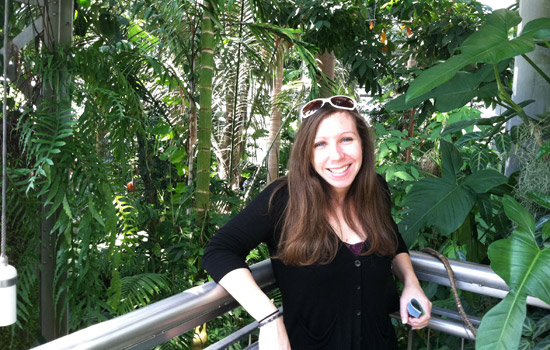Student wins prestigious NASA fellowship; spends fall at Goddard Space Flight Center
Christine Trombley worked in Goddard’s Exoplanets and Stellar Astrophysics Laboratory
Christine Trombley
Christine Trombley’s pursuit of massive stars took her to NASA’s Goddard Space Flight Center in Greenbelt, Md., for 10 weeks this fall.
The graduate student in RIT’s astrophysical sciences and technology program in the College of Science worked in Goddard’s Exoplanets and Stellar Astrophysics Laboratory, part of the Astrophysical Sciences Division. The research experience was the first part of Trombley’s yearlong NASA Graduate Student Researchers fellowship, which is helping to fund her thesis work.
“The Graduate Student Research fellowship is not just prestigious, but an opportunity to learn from experts in astrophysics,” says Trombley, of Warren, Mich. “Directly interacting with experts in my field goes beyond keeping up with the literature. I can learn directly what people are not only currently working on but what science they plan to do in the near future.”
Massive stars—Trombley’s main research interest—are up to 150 times larger than the sun, and “live fast and die young,” she notes. Their crash-and-burn existence makes these stars difficult to find and observe.
“The effects of such massive stars is extraordinary, despite their short lives,” she says. “These stars enrich their local environments by exploding as supernovae, which changes the chemical composition of the material from which a new generation of stars will be born. The formation of these massive stars is not well understood, theoretically or observationally, making their discovery and characterization important.”
When Trombley returns to RIT for the winter quarter, she will rejoin the Center for Detectors, where she studies massive stars with her thesis advisor, Don Figer, director of the center.
“This prestigious NASA fellowship allows Center for Detectors researcher Christine Trombley to push the limits beyond what is known about massive stars and their birthplaces,” Figer says.
After completing her research experience at Goddard Space Flight Center, Trombley will continue her thesis work, studying “massive star populations in stellar clusters, which are large aggregates of stars.”
“I am looking at the universality of the high mass initial mass function in stellar clusters, essentially whether or not massive stars form the same in different environments,” she says.
About the Center for Detectors: Imaging detectors reaching the edge of outer space and deep into the inner space of the human body inspire scientists and engineers in the Center for Detectors at Rochester Institute of Technology’s College of Science. Research at the center extends the possibilities of photon sensors in fields as diverse as astrophysics, biophotonics and defense.













